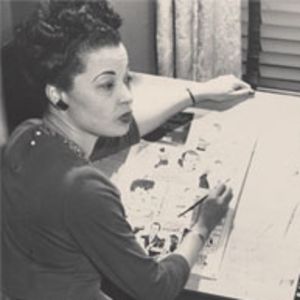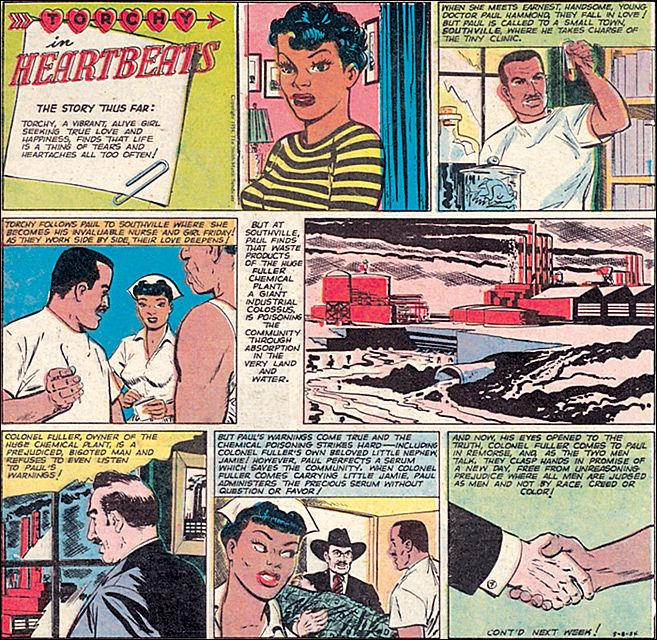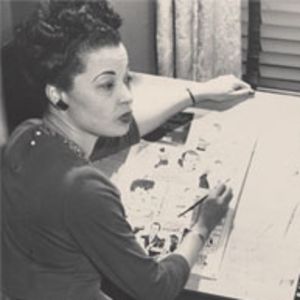
Jackie Ormes (1911-1985), creator of several popular comic strips in the 1930s–1950s, was the first female, African American syndicated cartoonist. In a male-dominated industry, Jackie captured a national audience with her fashionable and opinionated characters.
Ormes started out as a proofreader and freelance journalist for the Pittsburgh Courier, a black newspaper which published her first comic strip in 1937. She produced comic strips for the Courier from the 1930s to the 1950s, tackling subjects such as politics, foreign policy, racism and even environmental justice.
Her debut strip, Torchy Brown in “Dixie to Harlem,” follows a young Mississippi girl as she moves to NYC to become a lounge singer. In the 1937 comic strip, a young Torchy Brown is about to board a train that will whisk her away from her small, Southern town to the Big Apple.
Suddenly, a sign with two arrows catches her eye. One arrow points to the colored section of the train. The other arrow points to the white section. She jumps back, contemplating what she should do. Torchy, who’s black, smart and mischievous, decides to pretend she can’t read — and boards the whites-only car.
Torchy Brown was one of Ormes’ most beloved characters. She was smart. She was classy. And she frequently rebelled against the prescribed social order. Torchy also differed greatly from the usual depictions of blacks prior to the civil rights movement.

Nationally syndicated black cartoonist Barbara Brandon-Croft says that Ormes’ characters and stories were real — at a time when blacks were typically portrayed in a derogatory fashion. “Black women were always fat,” she says. “Had bandannas on their heads, you know. Had large lips. Were always porters. We were servants. Think of Gone With The Wind, you know. We didn’t speak clear English.”
The characters of Patty-Jo ‘n’ Ginger — another Ormes comic — ran counter to that stereotype. Ginger was an attractive, college-educated woman, drawn in a pinup-girl style. Her younger sister, Patty-Jo, was sharp and opinionated.
Ormes created the Patty Jo doll, the first black doll based on a character.
“No more rag Susies or Sambos. Just KIDS!” At long last, here was an African American doll with all the play features children desired: playable hair, and the finest and most extensive wardrobe on the market, with all manner of dresses, formals, shoes, hats, nightgowns, robes, skating and cowgirl costumes, and spring and winter coat sets, to name a few.”
— Jackie Ormes

